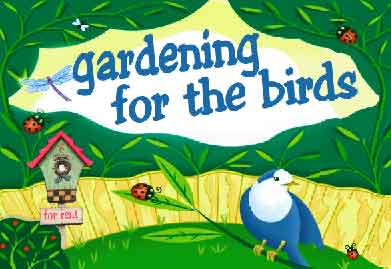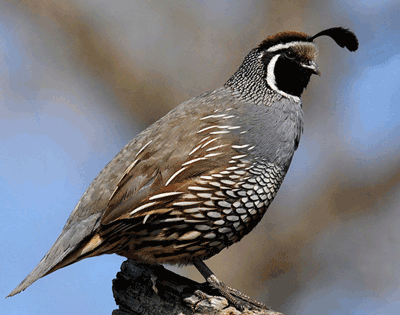[vc_row css=”.vc_custom_1456424354142{background-color: #0099ff !important;}”][vc_column][vc_single_image image=”5027″][vcex_spacing size=”50px”][vc_row_inner][vc_column_inner width=”1/12″][/vc_column_inner][vc_column_inner width=”5/12″][vcex_spacing][vc_single_image image=”5716″ alignment=”center”][vcex_spacing][/vc_column_inner][vc_column_inner width=”5/12″][vc_column_text]
Birds Are Our Neighbors
Birds eat insects. They are a natural way to control pests in our gardens. Some birds are important pollinators. By landing on a plant or sucking the nectar from a flower, and then moving on to the next, a bird can do the job usually done by bees. Birds also spread seeds. They eat berries and then when they “dispose of” their waste, the berry seeds are disposed along with it. Bird poop makes a good fertilizer. Seeds dispersed in bird poop have the added nutrient source that poop provides. Sometimes birds can be a little pesky. The eat some of the seeds that we plant and peck at some of the fruit and vegetables we grow. But their beauty and wonderful songs make up for these little annoyances. [/vc_column_text][vcex_spacing][/vc_column_inner][vc_column_inner width=”1/12″][/vc_column_inner][/vc_row_inner][/vc_column][/vc_row][vc_row][vc_column css=”.vc_custom_1479626637232{margin-right: 33px !important;margin-left: 33px !important;}”][vcex_spacing][vc_row_inner css=”.vc_custom_1479626682631{margin-right: 33px !important;margin-left: 33px !important;}”][vc_column_inner width=”1/2″][vc_column_text]
Bird Beaks:
Special Shapes for Special Purposes
[/vc_column_text][/vc_column_inner][vc_column_inner width=”1/6″][/vc_column_inner][vc_column_inner width=”1/6″][vc_column_text css=”.vc_custom_1479627738254{margin-right: 5px !important;margin-left: 5px !important;}”] 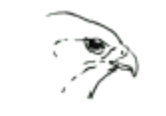
SHREDDER –
Birds of prey like hawks and owls have sharp, curved bills for tearing meat.
[/vc_column_text][/vc_column_inner][vc_column_inner width=”1/6″][vc_column_text css=”.vc_custom_1479627662110{margin-right: 5px !important;margin-left: 5px !important;}”] 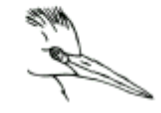
SPEAR –
Birds like herons and kingfishers have spear-like bills adapted for fishing.
[/vc_column_text][/vc_column_inner][/vc_row_inner][vc_row_inner css=”.vc_custom_1479626682631{margin-right: 33px !important;margin-left: 33px !important;}”][vc_column_inner width=”1/6″][vc_column_text css=”.vc_custom_1479626842332{margin-right: 11px !important;}”] 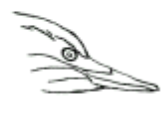
CHISEL –
oodpeckers have bills that are long and chisel-like for boring into wood to eat insects.
[/vc_column_text][/vc_column_inner][vc_column_inner width=”1/6″][vc_column_text css=”.vc_custom_1479626831388{margin-right: 11px !important;}”] 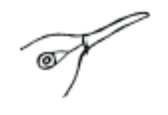
PROBE –
Hummingbird bills are long and slender for probing flowers for nectar.
[/vc_column_text][/vc_column_inner][vc_column_inner width=”1/6″][vc_column_text css=”.vc_custom_1479626820316{margin-right: 11px !important;}”] 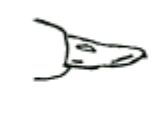
STRAINER –
Some ducks have long, flat bills that strain small plants and animals from the water.
[/vc_column_text][/vc_column_inner][vc_column_inner width=”1/6″][vc_column_text] 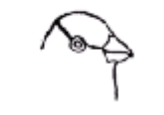
CRACKER –
Seed eaters like sparrows and cardinals have short, thick conical bills for cracking seed.
[/vc_column_text][/vc_column_inner][vc_column_inner width=”1/6″][vc_column_text css=”.vc_custom_1479626801402{margin-right: 11px !important;}”] 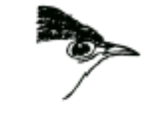
TWEEZER –
Insect eaters like warblers have thin, pointed bills.
[/vc_column_text][/vc_column_inner][vc_column_inner width=”1/6″][vc_column_text css=”.vc_custom_1479626780645{margin-right: 11px !important;}”] 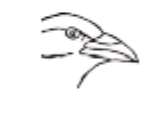
SWISS ARMY KNIFE –
Crows have a multi-purpose bill that allows them to eat fruit, seeds, insects, fish, and other animals.
[/vc_column_text][/vc_column_inner][/vc_row_inner][/vc_column][/vc_row][vc_row css=”.vc_custom_1457907310021{background-color: #0099ff !important;}”][vc_column][vcex_spacing][vc_single_image image=”7890″ alignment=”center”][/vc_column][/vc_row][vc_row][vc_column width=”1/6″][/vc_column][vc_column width=”2/3″][vcex_spacing][vc_column_text]
Places where wild animals can live
are disappearing every day –
both around the world and near YOUR home.
Birds, butterflies, animals and insects need places where plants grow. They need plants to make their homes and to provide food to feed their families. We are losing these creatures because there are fewer and fewer “green” places for them to live.
[/vc_column_text][vcex_spacing][/vc_column][vc_column width=”1/6″][/vc_column][/vc_row][vc_row css=”.vc_custom_1457907310021{background-color: #0099ff !important;}”][vc_column width=”1/4″][/vc_column][vc_column width=”1/2″][vc_column_text]
YOU CAN HELP!
Be a good neighbor. Make your garden bird friendly.
Creating a landscape desirable to birds is not difficult.
To start, keep in mind the necessities of life for a bird.
[/vc_column_text][/vc_column][vc_column width=”1/4″][/vc_column][/vc_row][vc_row][vc_column width=”1/4″][/vc_column][vc_column width=”1/2″][vc_column_text]
Plants
Birds need plants for food, nesting sites, and protection from predators. Plantings should be dense (they can be thorny) and allowed to grow in their natural form. Shaping and trimming shrubs discourages nesting birds, depletes extra leaves used for nest building, and removes flower and fruit food sources.
Plants should be located close enough to bird feeders (within 15 to 20 feet) to provide quick protection from predators, yet far enough away so they do not provide “ambush sites” for cats. Dead trees or snags provide much needed nesting and food storage sites for many endangered species of birds. They are in short supply. If there is a dead tree in your yard that is not a hazard or eyesore, why not grow a vine around it and leave it for the birds?
Water
People need water. So do birds. Drinking and bathing are essential to a bird’s health. Water may be the single most important factor in attracting birds to your garden. There are many ways to provide water, from a very basic puddle of water on the ground to an elaborate sculptured birdbath or fountain. The birds don’t seem to care as long as it is wet. If you use a birdbath, put it on the ground, under a tree or on a pedestal within 15 or 20 feet of quick cover — a wet bird cannot make as quick a getaway! Just think of how many times you’ve watched wild birds happily flapping about in a mud puddle and try to recreate that experience in your yard.
Food
Do your homework. Different birds look for food at different heights. And, just like people, different birds have different tastes. Sunflower seeds, peanuts and other seeds are always popular. Check out the library for particular favorites.
And a few words about cats…
Cats may be a good friend to humans, but birds have a different story to tell!
Cats are the number one enemy of garden birds. Cats are dedended from a long line of very successful hunters and they are very good at stepping lightly, leaping and catching prey. If a bird is not paying close attention to what’s around them….he’s lunch! But don’t wowrry. There’s no need to ditch the cat. Just put a bell around his/her neck so the birds have a signal when danger may be near.
Western Scrub Jay Aphelocoma californica
SHRUBS FOR BIRDS in California
- Arbutus unedo (Strawberry Tree) several species
- Arctostaphylos sp. (Manzanita) – Blue Jay, Mockingbird, Band-tailed Pigeion, Fox Sparrow, Robin, Wren-tit and others.
- Cotoneaster Sparrow (Bearberry) – Cedar Waxwing, Warbler, Mockingbird, Robin, Sparrow, Thrush
- Heteromeles arbutifolia (Toyon) – Quail, Band-tailed Pigeion and at least 7 other species
- Ilex sp. (Holly) – Bluebird, Blue Jay, Chickadee, Cedar Waxwing, Finch, Flicker, Mourning Dove, Mockingbird, Nuthatch, Phoebe, Robin, Thrush, TI, Thrush, Thrasher, Towhee, Vireo, Warbler, Wodpecker
- Ligustrum (Privet) – Cedar Waxwing, Finch, Mockingbird, Sparrow, Towhee, wrens
- Mahonia sp. (Oregon Grape) – Cedar Waxwing, Mockingbird, Robin, Towhee
- Myrica californica (Pacific Wax Myrtle) – Chickadee, Flicker,-Towhee, Warbler, Wren-tit
- Pyracantha sp. (Firstborn) – Blue Jay, Cedar Waxwing, Flicker, Mockingbird, Nuthatch, Robin, Sparrow, Thrush, Thrasher, Towhee, Vireo, Wodpecker
- Rhamnus californica (Coffee Berry) – Blue Jay, Cedar Waxwing, Mockingbird, Oriole, Robin, Thrush, Thrush, Thrasher, Warbler
- Rhus ovata (Sugarbush) – Quail, Wren-tit, and at least six others
- Ribes sp. (Gooseberry) – Bluebird, Finch, Flicker, Robin, Thrush, Thrasher, Towhee
- Ribes & rosa californica – Bluebird, Grosbeak, Junko, Mockingbird, Sparrow, Townsend’s Solitaire, Ring-necked Pheasant
- Rubus sp. (Blackberry / Berry) – Bluebird, Blue Jay, Cedar Waxwing, Finch, Grosbeak, Mourning Dove, Mockingbird, Phoebe, Robin, Sparrow, Titmouse, Thrush, Thrasher, Towhee, Vireo, Warbler
- Sambucus sp. (Elderberry) – Bluebird, Blue Jay, Cedar Waxwing, Finch, Flicker, Grosbeak, Mourning Dove, Mockingbird, Nuthatch, Quail, Phoebe, Robin, Sparrow, Thrush, Titmouse, Thrush, Thrasher, Towhee, Vireo, Warbler, Wodpecker
- Symphoricarpos sp. (Snowberry) – Cedar Waxwing, Grosbeak, Robin, Thrush, Thrasher, Towhee
- Vaccinum sp. (Huckleberry) – Chickadee, Robin, Flicker, Grouse, Wren-tit, Swainson’s Thrush and many others
- Viburnum sp. – Bluebird, Cedar Waxwing, Grosbeak, Mockingbird, Robin, Sparrow, Thrush, Towhee, Starlings
- Vitis sp. (Grape) – Bluebird, Blue Jay, Cedar Waxwing, Finch, Mourning Dove, Mockingbird, Robin, Sparrow, Thrush, Thrasher
[/vc_column_text][/vc_column][vc_column width=”1/4″][/vc_column][/vc_row][vc_row css=”.vc_custom_1457907310021{background-color: #0099ff !important;}”][vc_column width=”1/4″][/vc_column][vc_column width=”1/2″][vcex_spacing][vc_column_text]
The California State Bird
California Quail, Callipepla californica
[/vc_column_text][vc_raw_html]JTNDcCUyMHN0eWxlJTNEJTIydGV4dC1hbGlnbiUzQSUyMGNlbnRlciUzQiUyMCUyMiUzRVR5cGljYWwlMjBWb2ljZSUzQ3AlMjBzdHlsZSUzRCUyMnRleHQtYWxpZ24lM0ElMjBjZW50ZXIlM0IlMjAlMjIlM0UlM0NvYmplY3QlMjBkYXRhJTNEJTIyaHR0cCUzQSUyRiUyRmFsbGFib3V0YmlyZHMub3JnJTJGZ3VpZGUlMkZiYmltYWdlcyUyRmFhYiUyRnN3ZiUyRnBsYXllcl9tcDNfbWF4aS5zd2YlMjIlMjBoZWlnaHQlM0QlMjIzMCUyMiUyMHR5cGUlM0QlMjJhcHBsaWNhdGlvbiUyRngtc2hvY2t3YXZlLWZsYXNoJTIyJTIwd2lkdGglM0QlMjIxMTUlMjIlM0UlM0NwYXJhbSUyMG5hbWUlM0QlMjJ3bW9kZSUyMiUyMHZhbHVlJTNEJTIyb3BhcXVlJTIyJTNFJTNDcGFyYW0lMjBuYW1lJTNEJTIybW92aWUlMjIlMjB2YWx1ZSUzRCUyMmh0dHAlM0ElMkYlMkZhbGxhYm91dGJpcmRzLm9yZyUyRmd1aWRlJTJGYmJpbWFnZXMlMkZhYWIlMkZzd2YlMkZwbGF5ZXJfbXAzX21heGkuc3dmJTIyJTNFJTNDcGFyYW0lMjBuYW1lJTNEJTIyYmdjb2xvciUyMiUyMHZhbHVlJTNEJTIyJTIzZmZmZmZmJTIyJTNFJTNDcGFyYW0lMjBuYW1lJTNEJTIyRmxhc2hWYXJzJTIyJTIwdmFsdWUlM0QlMjJtcDMlM0RodHRwJTNBJTJGJTJGYWxsYWJvdXRiaXJkcy5vcmclMkZndWlkZSUyRlNPVU5EJTJGU1BFQ0lFUyUyRjE1NkEubXAzJTI2YW1wJTNCd2lkdGglM0QxMTUlMjZhbXAlM0JoZWlnaHQlM0QzMCUyNmFtcCUzQmJ1dHRvbndpZHRoJTNEMzAlMjZhbXAlM0JzbGlkZXJ3aWR0aCUzRDEwJTI2YW1wJTNCbG9hZGluZ2NvbG9yJTNEOTkwMDAwJTI2YW1wJTNCYmdjb2xvcjElM0Q2NjY2NjYlMjZhbXAlM0JzbGlkZXJjb2xvcjElM0RmZmZmZmYlMjZhbXAlM0JzbGlkZXJjb2xvcjIlM0RjY2NjY2MlMjZhbXAlM0JzbGlkZXJvdmVyY29sb3IlM0RGNEJCM0ElMjZhbXAlM0JidXR0b25vdmVyY29sb3IlM0RGNEJCM0ElMjIlM0UlM0MlMkZvYmplY3QlM0UlM0MlMkZwJTNFJTNDcCUyMHN0eWxlJTNEJTIydGV4dC1hbGlnbiUzQSUyMGNlbnRlciUzQiUyMCUyMiUzRUNvbXBsaW1lbnRzJTIwb2YlMjAlM0NhJTIwaHJlZiUzRCUyMmh0dHAlM0ElMkYlMkZ3d3cuYmlyZHMuY29ybmVsbC5lZHUlMkYlMjIlMjB0YXJnZXQlM0QlMjJfYmxhbmslMjIlM0VUaGUlMjBNYWNhdWxheSUyMExpYnJhcnklMjBhdCUyMFRoZSUyMENvcm5lbGwlMjBMYWIlMjBvZiUyME9ybml0aG9sb2d5JTIwJTNDJTJGYSUzRSUzQyUyRnAlM0UlM0NwJTIwc3R5bGUlM0QlMjJ0ZXh0LWFsaWduJTNBJTIwY2VudGVyJTNCJTIwJTIyJTNF[/vc_raw_html][/vc_column][vc_column width=”1/4″][/vc_column][/vc_row]

